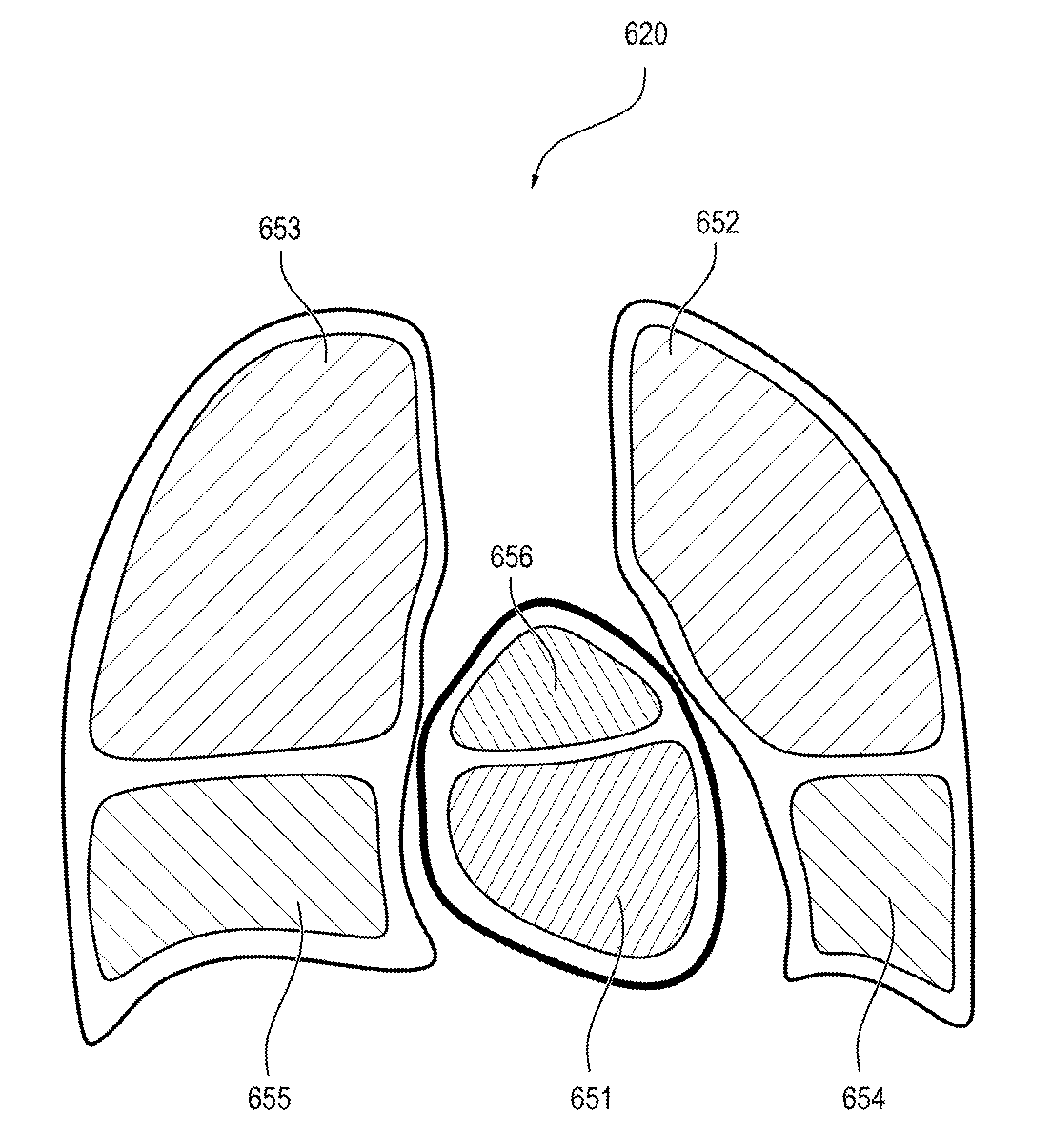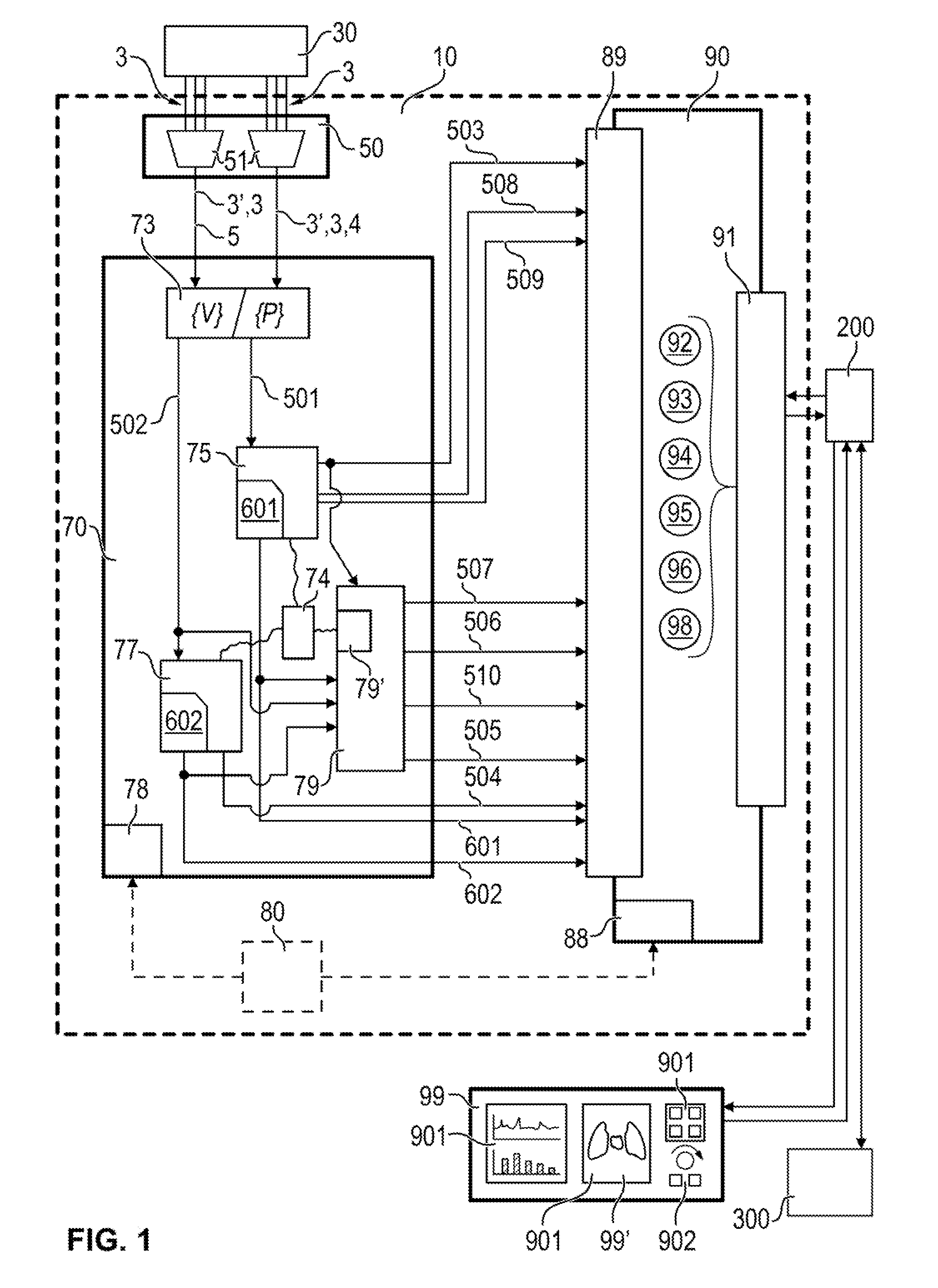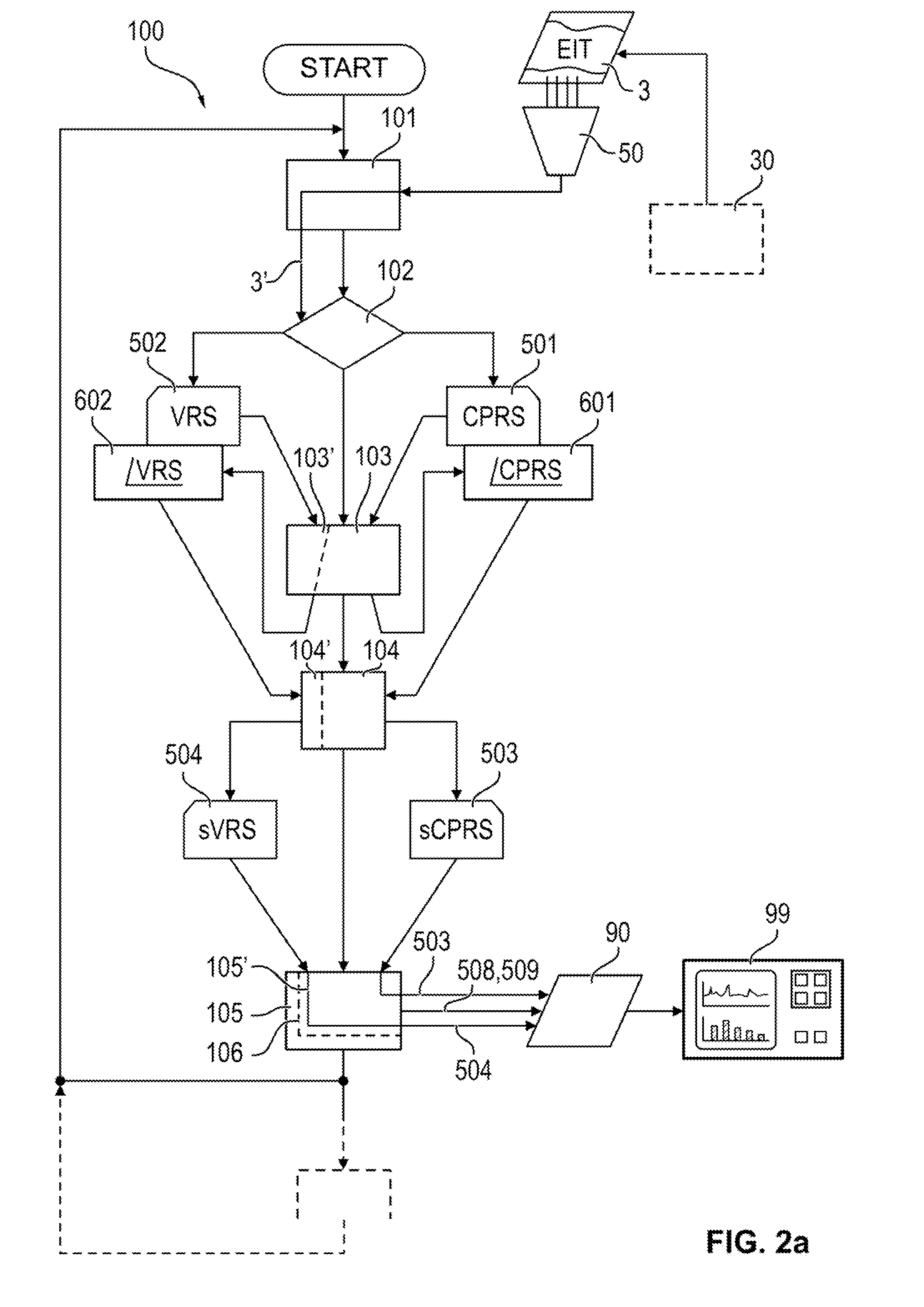Device and method for processing tomographic data
- Summary
- Abstract
- Description
- Claims
- Application Information
AI Technical Summary
Benefits of technology
Problems solved by technology
Method used
Image
Examples
Embodiment Construction
[0138]FIG. 1 schematically shows an arrangement 10 of functional elements for a processing of EIT data 3. This arrangement 10 comprises a data input unit 50, a calculation and control unit 70 and a data output unit 90 as basic components. Moreover, a display device 99 connected with the data output unit 90 is shown in this FIG. 1. The display device 99 comprises a visualization means 901, such as display elements, display screens, displays for visualization of graphs, curve courses, diagrams or images or even numerical value displays for the reproduction of numerical values. Moreover, the display device 99 comprises input and control elements 902, such as switches, buttons, knobs, and rotary knobs. A contact-sensitive display (touchscreen) with combination of input and visualization functionalities represents a special embodiment variant. The data input unit 50 reads in data from an EIT device 30 as EIT data 3 at at least one data input 51 or a plurality of data inputs 51. The EIT d...
PUM
 Login to view more
Login to view more Abstract
Description
Claims
Application Information
 Login to view more
Login to view more - R&D Engineer
- R&D Manager
- IP Professional
- Industry Leading Data Capabilities
- Powerful AI technology
- Patent DNA Extraction
Browse by: Latest US Patents, China's latest patents, Technical Efficacy Thesaurus, Application Domain, Technology Topic.
© 2024 PatSnap. All rights reserved.Legal|Privacy policy|Modern Slavery Act Transparency Statement|Sitemap



